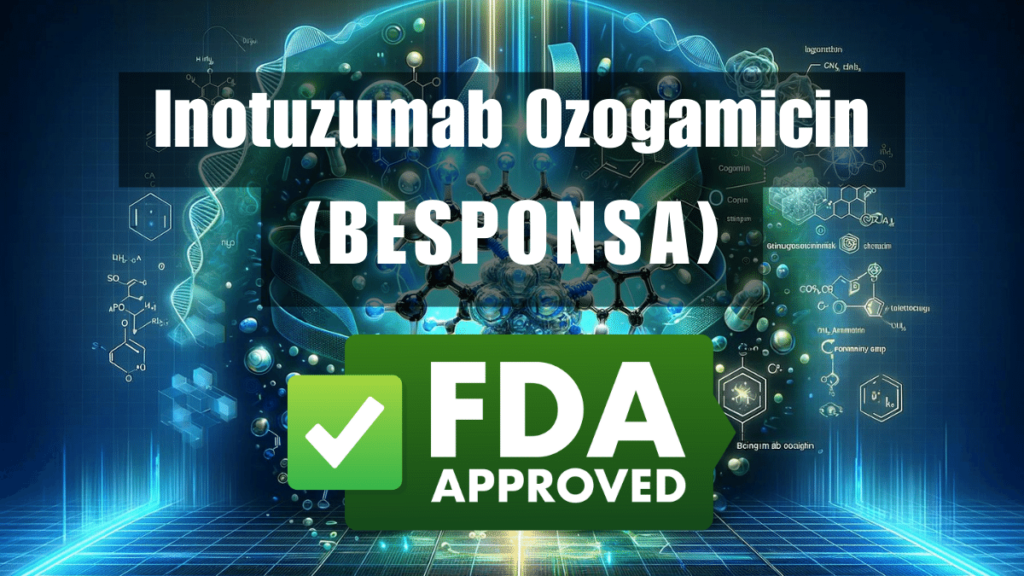Overview
The U.S. Food and Drug Administration (FDA) has granted approval for the use of inotuzumab ozogamicin (Besponsa, Pfizer) in pediatric patients aged 1 year and older with relapsed or refractory CD22-positive B-cell precursor acute lymphoblastic leukemia (ALL). This decision represents a significant advancement in the treatment options available for this particular patient population.
[Exclusive Video] Efficacy and Safety of Inotuzumab Ozogamicin (BESPONSA) – Mojtaba Akhtari, MD, FACP-Professor of Medicine-Loma Linda University – MOASC 2024 Advances in Oncology
Efficacy Evaluation
The approval was based on data from a multicenter, single-arm, open-label study involving 53 pediatric patients aged 1 year and older with relapsed or refractory CD22-positive B-cell precursor ALL. The study evaluated two dose levels: an initial dose of 1.4 mg/m2/cycle in 12 patients and 1.8 mg/m2/cycle in 41 patients. Patients received a median of 2 cycles of therapy.
Outcome Measures
The study’s primary efficacy measures included complete remission (CR), duration of CR, and the proportion of patients achieving minimal residual disease (MRD) negative CR. CR was defined by specific criteria, including bone marrow blast percentages and peripheral blood counts. MRD negativity was assessed through flow cytometry and PCR techniques.
Of the patients studied, 22 out of 53 (42%) achieved CR, with a median duration of CR of 8.2 months. Notably, a high proportion of patients achieving CR also achieved MRD negativity, further demonstrating the treatment’s efficacy.
Safety Profile
Common adverse reactions observed in patients receiving inotuzumab ozogamicin included thrombocytopenia, pyrexia, anemia, vomiting, infection, hemorrhage, neutropenia, nausea, leukopenia, febrile neutropenia, increased transaminases, abdominal pain, and headache. Monitoring and management of these adverse events are essential aspects of patient care.
Dosage and Administration
The recommended dosage for the first cycle of inotuzumab ozogamicin is 1.8 mg/m2 per cycle, administered as three divided doses on Days 1, 8, and 15. The duration of Cycle 1 is typically 3 weeks but may be extended to 4 weeks under certain circumstances, including treatment response and toxicity considerations.
Regulatory Status
Inotuzumab ozogamicin received priority review and orphan drug designation from the FDA. These designations underscore the drug’s potential to address significant unmet medical needs in pediatric patients with relapsed or refractory CD22-positive B-cell precursor ALL.
Conclusion
The FDA’s approval of inotuzumab ozogamicin offers a promising treatment option for pediatric patients with relapsed or refractory CD22-positive B-cell precursor acute lymphoblastic leukemia. The decision highlights the importance of continued research and development efforts aimed at improving outcomes for individuals facing challenging medical conditions. Effective management of adverse events and adherence to recommended dosing regimens will be essential for maximizing the benefits of this novel therapy.
Reference Links:
FDA approves inotuzumab ozogamicin for pediatric patients with acute lymphoblastic leukemia: https://www.fda.gov/drugs/resources-information-approved-drugs/fda-approves-inotuzumab-ozogamicin-pediatric-patients-acute-lymphoblastic-leukemia
OncologyTube Links: https://oncologytube.com/shira-n-dinner-md-inotuzumab-ozogamicin-and-blinatumomab/

